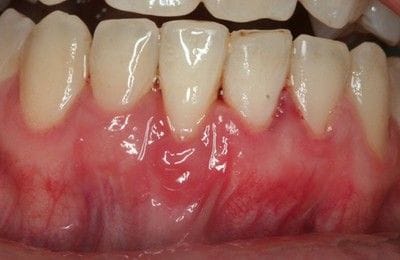Under normal circumstances, the root surface is surrounded by the overlying alveolar bone and gingival tissues (gums). Gingival recession often results from a normal physiological process (aging). Other causes such as periodontal disease, trauma, aggressive tooth brushing, high frenum (muscle attachment) or misaligned teeth can all lead to receding gums. People who have very thin gum tissue (thin periodontal biotype) are more prone to gingival recession. The exposed tooth/root surfaces are prone to caries (decay) and increased tooth sensitivity. The recession itself acts as a predisposing factor to retain dental plaque causing further inflammation and recession.
Gingival grafting improves aesthetics, covers the tooth/root surface previously exposed, prevents further root exposure and facilitates oral hygiene by removing the cleft.The grafting procedure involves grafting a layer of gum tissue from the palate to the site with recession. There is also the alternative of using artificial collagen matrices in which case there is no need to harvest from the palate. Gingival grafting procedures are performed under local anesthesia.
Gingival grafting improves aesthetics and patient comfort, especially for those areas which are sensitive and/or tender when brushing, covers the tooth/root surface previously exposed, prevents further root exposure and facilitates oral hygiene by removing the cleft. It also increases the thickness of the gingival tissue and makes it more stable and resistant over time.












